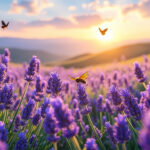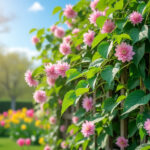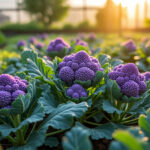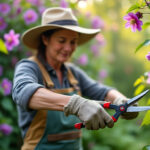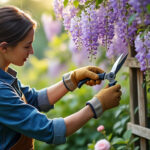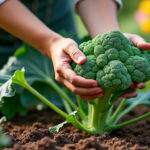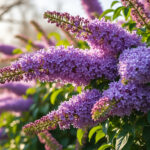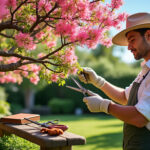Lavender is a beloved plant, cherished not only for its enchanting color but also for its delightful fragrance that fills gardens and homes alike. Understanding when to harvest this aromatic gem is crucial for maximizing both its scent and culinary flavor. The right timing can also enhance the vitality of the plants, ensuring they thrive for years. This resource provides essential insights into harvesting lavender effectively while balancing its aesthetic and practical applications.
- Optimal timing for harvest
- Techniques for harvesting
- Guidelines for drying lavender
- Choosing the right lavender variety
- Creative uses for harvested lavender
Optimal Timing for Harvesting Lavender
Harvesting lavender effectively hinges upon timing. The most suitable periods for collecting this fragrant plant vary based on regional climates, but a general rule of thumb applies to the English lavender variety. Ideally, lavender should be picked when the flower buds are well-formed yet not fully opened. During this phase, the delicate buds exhibit richer color and aroma, ultimately enhancing their perfume and ensuring a longer shelf life.
Notably, flowers harvested at this early stage are more likely to retain their fragrance during the drying process. To visualize the ideal moment for harvesting, consider three stages of bloom:
| Stage | Description |
|---|---|
| Closed Buds | Rich in essential oils; best time for harvesting 🌼 |
| Mix of Open and Closed Buds | Still fragrant, but less ideal for drying |
| Fully Open Flowers | May not retain all oils; best to avoid for drying |
Techniques for Harvesting Lavender
When ready to harvest, utilizing sharp bypass pruners is essential. Carefully select long flower stems, ensuring to leave at least two sets of leaves on the green portion of the stem to promote regrowth. Preferably, three to four sets of leaves should be retained to support the plant’s vitality. Using this method fosters a healthy shrub while still providing ample flowers for use.
- Use sharp pruners ✂️
- Leave 2-4 sets of leaves on the plant 🍃
- Gather stems into a bundle for easy handling 💐
Pruning for Health and Longevity
Beyond harvesting flowers, regular pruning helps maintain a tidy plant structure. It enhances air circulation and reduces the risk of disease. Two pruning sessions during the growing season can keep the lavender healthy and looking its best.
The best time to prune clematis for thriving growth
Guidelines for Drying Lavender
Post-harvest, the drying process is key to preserving the lavender’s unique properties. The best method involves hanging the lavender upside down in a warm, dry environment, away from direct sunlight. Good options include sheltered spots like garages or covered patios, which prevent moisture buildup, allowing for optimal drying conditions.
Typically, drying time spans 2-4 weeks. The dried flowers will easily fall from the stems when fully ready, indicating they have reached the appropriate dryness for storage.
- Hang upside down in a warm, dark place 🌞
- Avoid moisture areas for effective drying ❌💧
- Store dried buds in airtight containers for preservation 🏺
Choosing the Right Lavender Variety
Selecting the correct lavender cultivar is fundamental to achieving desired scent and flavor profiles. The English lavender (Lavandula angustifolia) and its hybrid (L. x intermedia) are prominent for culinary and crafting uses. Meanwhile, the Spanish lavender (Lavandula stoechas) offers distinctive blooms with its unique bracts.
| Variety | Characteristics | Uses |
|---|---|---|
| English Lavender | Sweet scent, rich fragrance | Culinary, essential oils, crafts |
| French Lavender | Robust and showy | Aesthetic, aromatic uses |
| Spanish Lavender | Striking butterfly-like bracts | Decorative and culinary delights |
Creative Uses for Harvested Lavender
Once harvested, lavender opens up a world of creativity. Its versatility allows for culinary delights and artistic crafts. From soothing lavender-infused syrups to delightful sachets, the possibilities are endless. Here are just a few innovative ideas for your lavender bounty:
- Lavender Lemonade 🍋
- DIY Lavender Wreaths 🌿
- Insect repellents using lavender oil 🦟
- Lavender sachets for linens 🛏️
- Artisan soaps and bath products 🛁
For those seeking essential oils, brands like L’Occitane and Young Living offer high-quality lavender options. Additionally, doTERRA and Mountain Rose Herbs provide products that cater to aromatherapy needs.
FAQ
When is the best time to harvest lavender for cooking?
Harvest lavender when a few buds have opened to maximize flavor in culinary uses.
Can lavender be harvested multiple times in a season?
Yes, depending on the climate and growth conditions, lavender can yield multiple harvests throughout its growing season.
How should dried lavender be stored?
Dried lavender should be kept in airtight containers in a cool, dark spot to maintain its fragrance and flavor.
What lavender varieties are best for essential oils?
English lavender (L. angustifolia) is preferred for extracting essential oils due to its potent fragrance.
Is it necessary to prune lavender after harvesting?
Yes, pruning after flowering promotes healthier regrowth and a fuller plant for next season.


